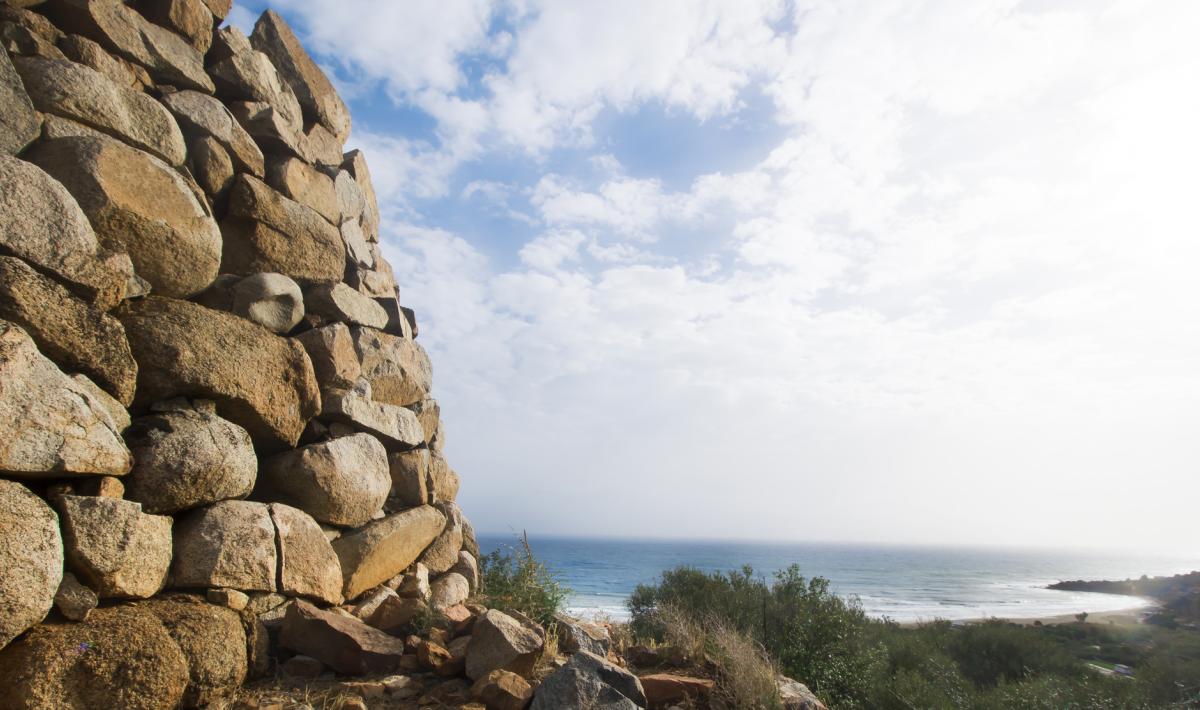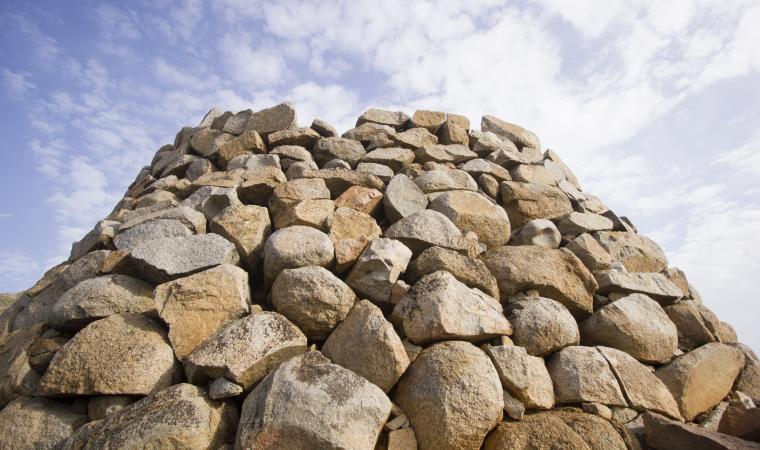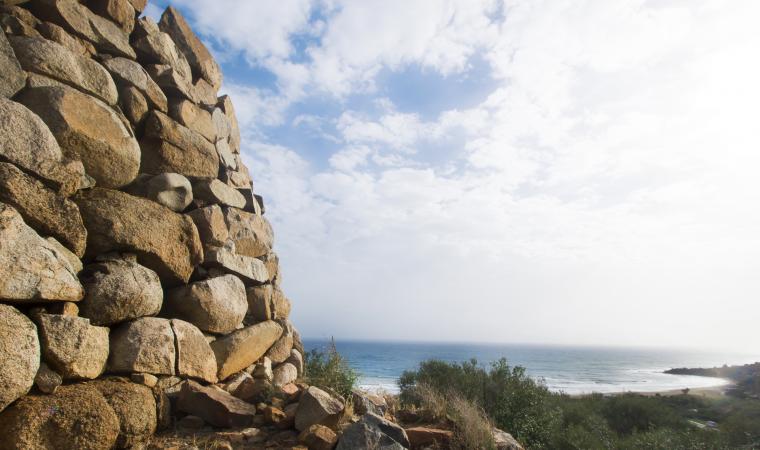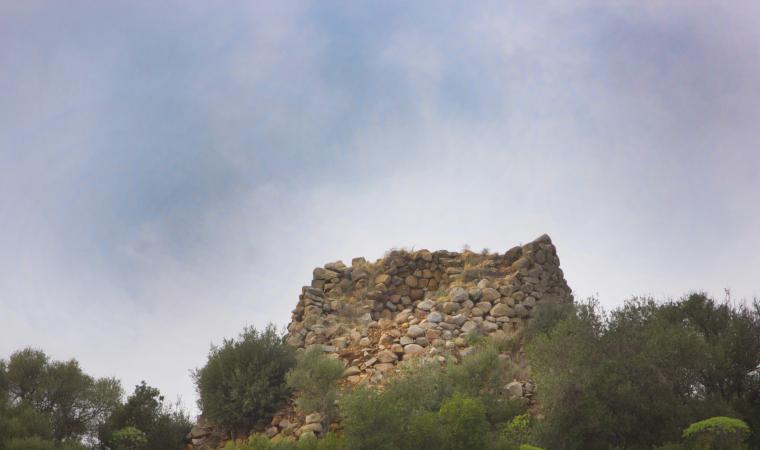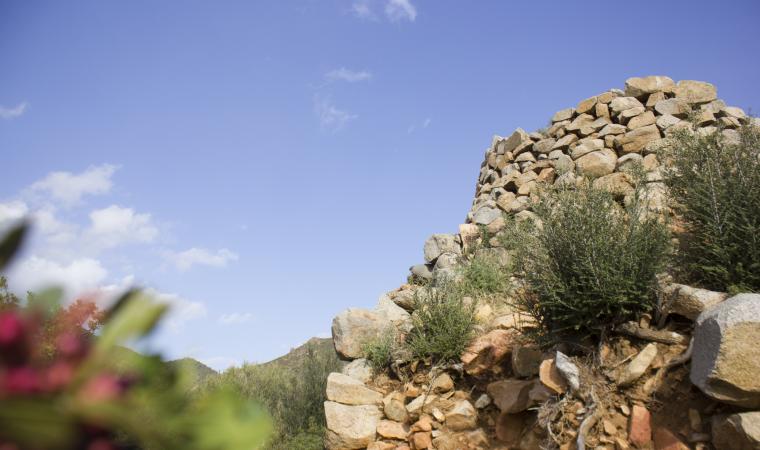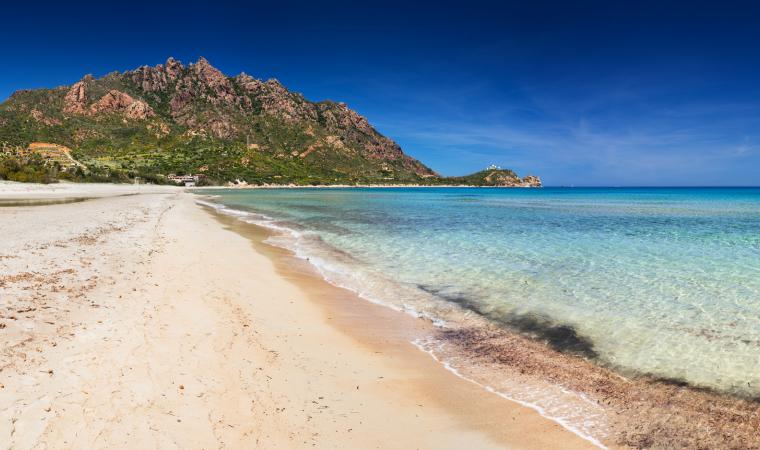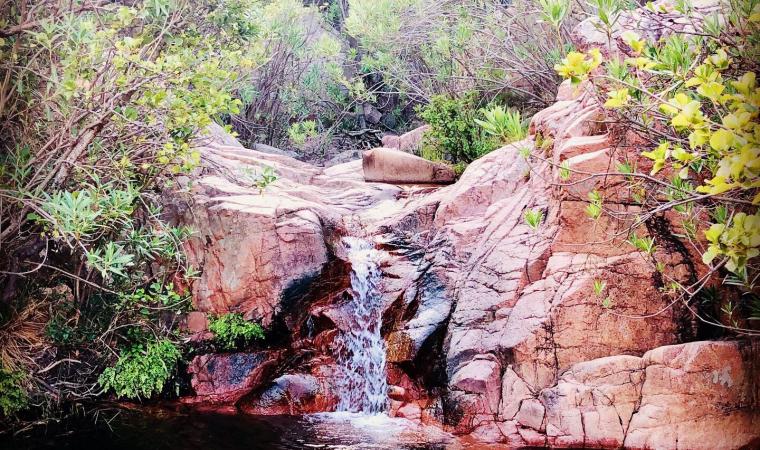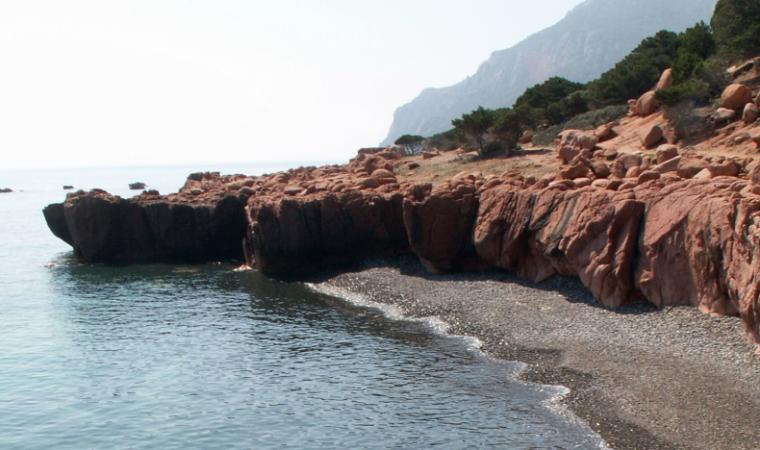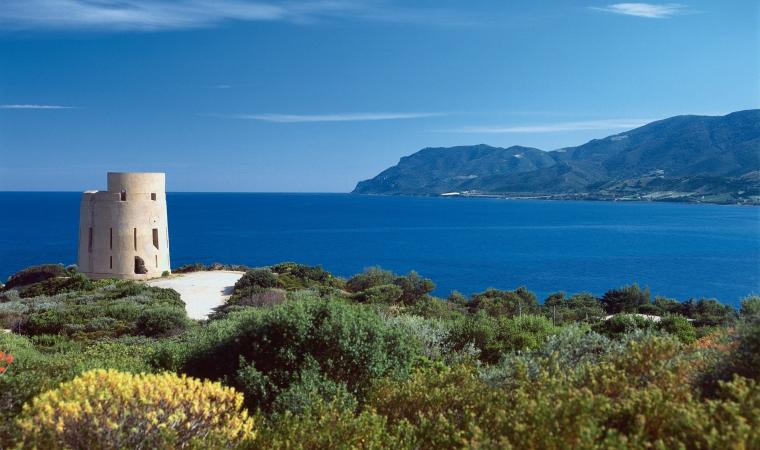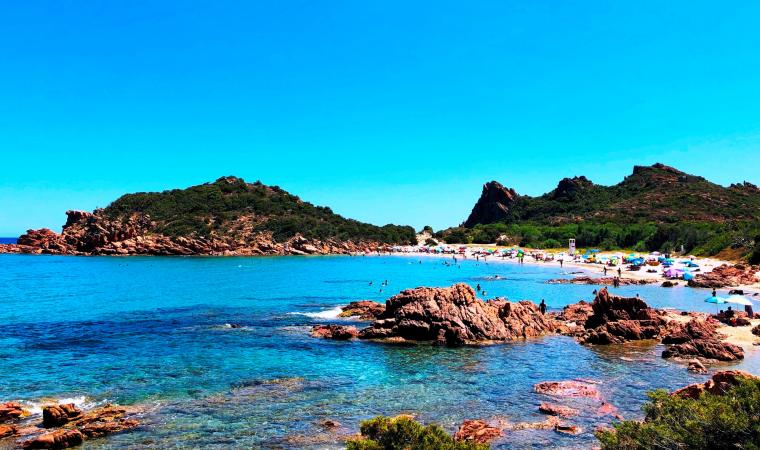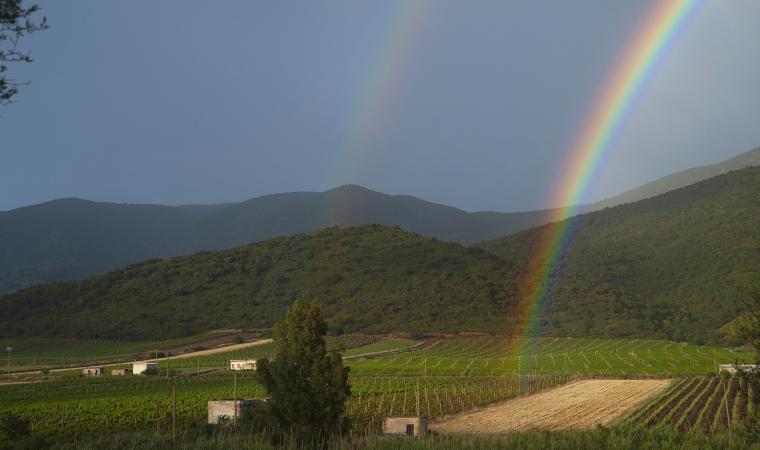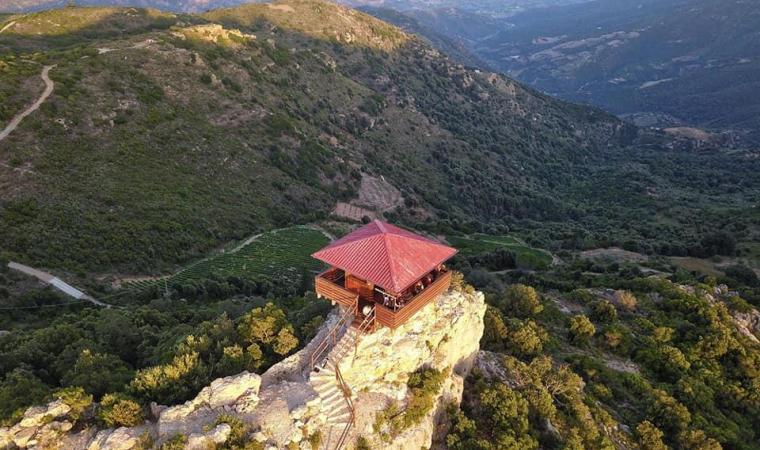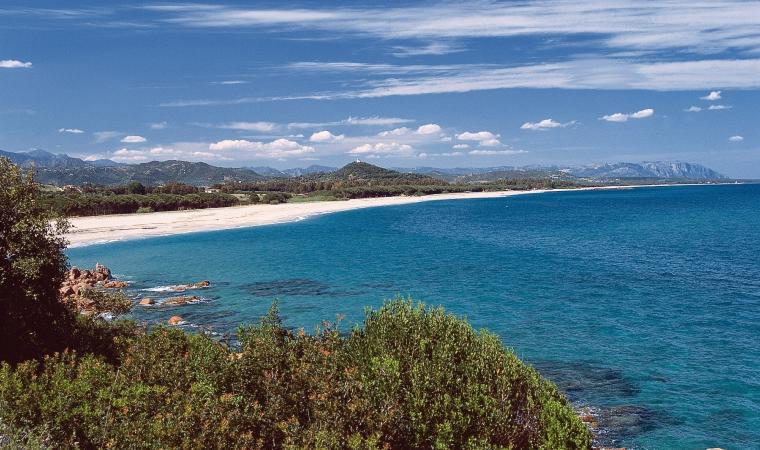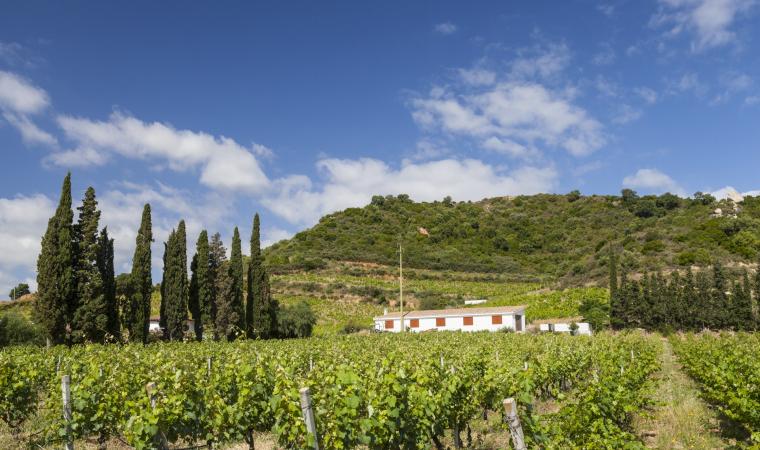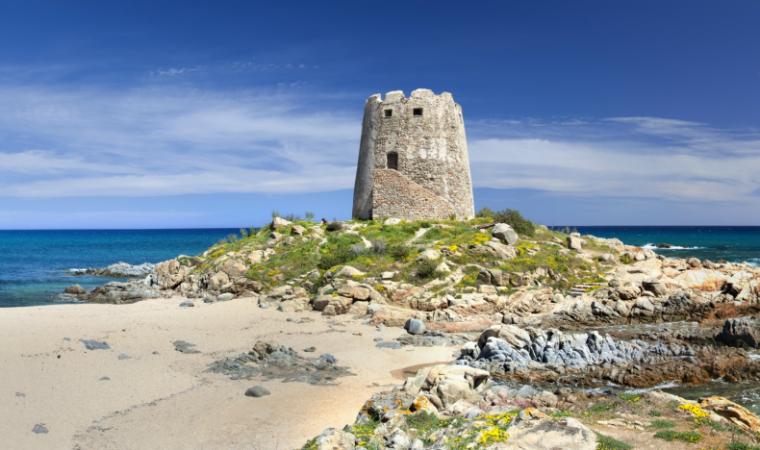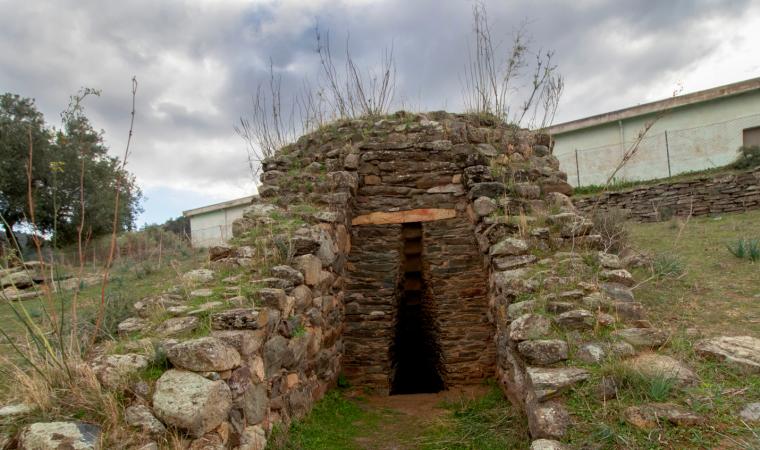It dominates the marina of Sarrala from the top of a hill with a view of the large, splendid Foxi Manna, in the same way it once guarded a port built next to the beach, at the mouth of a river. The Alèri, built around 3500 years ago, is the best-preserved nuraghe out of dozens discovered in the Tertenia territory. Ten kilometres separate the main town in southern Ogliastra from the archaeological site, which can be reached along the road that leads from the village, through Capo Sferracavallo, to its seafront. After parking your car, you can walk along a path through wild nature and evidence of the distant past.
It is a complex nuraghe of great visual impact, consisting of a central tower with a tholos roof, built at the beginning of the Middle Bronze Age (15th century BC), to which, over the centuries, until the 11th century BC, three other secondary towers were added, positioned on the sides and the front with respect to the keep, connected by straight curtain walls and internally linked by covered corridors. The origin of the building dating back to the archaic phase of the Nuragic age is confirmed by the use of unprocessed granite rocks, of various sizes, positioned in uneven rows.
Starting at the architraved entrance, there is a seven-metre-long corridor. Halfway along it, there is a stairwell, now blocked after various collapses, and there is a circular room at the end, with a diameter of four and a half metres and about eight metres high. It has a typical lowered floor and two niches with ogival ceilings. On the slope of the hill, you will see the remains of circular and oval masonry, perhaps belonging to a village, also frequented later on, in the Punic-Roman era and not yet excavated.
Tertenia is a fascinating mixture of landscapes between the sea and the mountains. Its long seafront is made up of beaches of fine, light sand, interrupted by rocky shorelines: in addition to Foxi Manna, don’t miss Foxi de Murdegu with the 16th-century tower of San Giovanni di Sarrala above it. According to tradition, the town emerged here and was then moved to defend itself from Saracen incursions. Near the coast, you’ll find plains and hills covered in Mediterranean scrub and dotted with prehistoric remains. The first traces of a settlement date back to the Final Neolithic period in the 4th-3rd millennium BC, while there was a very high population density in the Bronze Age: almost 80 nuraghi, about thirty Giants’ Tombs, around twenty Nuragic villages and a sacred well. Along the Sarrala seafront, you’ll find another nuraghe, that of Nastasi, where ceramic artefacts were found and are now on display at the G. Sanna Museum in Sassari.

